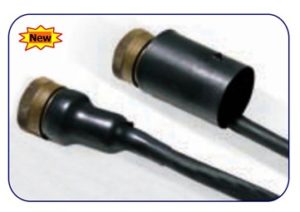
Heat shrink products are versatile items that are of great use in varied industrial applications. Safeguarding your cables from abrasion, weather, chemicals and acting as important means for colour coding, bundling and strain relief are just a few of the many benefits offered by this item. Heat shrink boot, heat shrink tubes, heat shrink sleeves etc are great insulation enhancement products and are pretty simple to use provided you follow proper guidelines while using them.
Guidelines for Application
- Firstly, it is essential to have a heat shrink product that best fits your requirement.
- Keeping an assortment of tubing in varied dimensions is a good idea for having a complete maintenance kit at your disposal. There are several suppliers who keep a stock of heat shrink products in different colours and sizes.
- While doing any repair work, take care to see that the cable is still in good condition.
- Ensure that there is no harm caused to insulation that surrounds the individual conductors so as to avoid the possibility of any shorts.
- In the same manner check to see that the conductors are not cut or dented.
- For maximum sealing it is better to opt for in case of tubing, one that is dual walled. The inner layer offers additional protection to the cables.
- A heat source like a heat gun will enable you to have control over the air flow and temperature.
- Even application of heat is a must and the heat gun has to be moved efficiently from one end to the other end of the product. Every inch of the product should meet the required heat.
Applying the Heat Shrink Product
- Selection of the right size is very important for your work task. For obtaining the best fit, the heat shrink product’s final diameter should be smaller than the diameter of the object you have to cover and the expanded or original diameter should be sufficiently large to cover the required area and any attached connectors very nicely.
- The heat shrink has to be cut to the required length after allowing for at least one fourth inch overlay over current connectors or insulation. Also remember to make provision for some longitudinal shrinkage.
- Slide the heat shrink product that has been cut into the required dimensions over the item that has to be covered.
- Before you get to the shrinking procedure confirm the endorsed heating temperature of your heat shrink product. Use of heat shrink oven or heat gun will facilitate even shrinkage. Avoid using open flame.
- If the length of the cable to be covered is pretty long then ideally you need to start shrinking from one end and move gradually to the other end. In order that no air bubbles are formed in the process, revolve the item while applying heat.
- Direct the heat evenly around the width and length of the heat shrink product such that it shrinks evenly and fits snugly over the cable, splice or hose as the case may be. At that moment, the heat source has to be immediately removed and the product let to cool gradually.
- Ensure that your actions do not lead to overheating of the heat shrink product as that will make it charred or brittle.